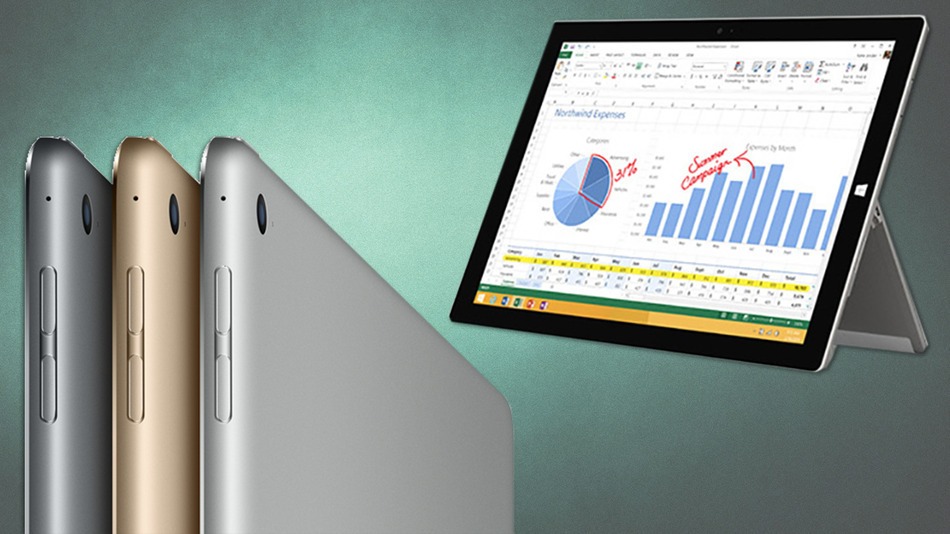iPad Pro versus Surface Pro 4: a rivalry that’s starting to make sense.
On one corner, sits the Apple iPad Pro, a device in a league of its own, pitched against entry-level laptops and netbooks. The iPad Pro is very much a business device, with a strong appeal to higher-end consumers looking for a lightweight option to an ultra portable, with all the perks of an iOS tablet. Apps run side-to-side, in split-view, and scroll independently; processing is fast and reliable, and when paired with Apple Pencil, creative applications really show their usefulness, like Adobe Creative CC for iPad, as well as productivity apps like Microsoft Office.

On the opposite corner, we have the Microsoft Surface Pro 4, a Windows 10 hybrid tablet/laptop, powered by Windows 10, and capable of running desktop applications, as well as Windows 10 apps from the Windows Store.
Similarly to the iPad Pro, the Surface Pro 4 is designed as an entry-level laptop replacement, fitting the profile of most higher-end netbooks and small laptops, but with unique portability, and power. We used the term “similarly”, as the iPad Pro and the Surface Pro 4, while they both satisfy similar requirements, they are not the same. Yet, while Windows 10 and iOS are on almost opposite fronts, from a consumer’s perspective the basic working principles are on equal ground.
Here is why the hybrid laptop is the sweet spot of consumer technology:
One main reason can be found in a popular technology essay, titled “A Netbook, an iPad Pro, and the Surface Walk Into a Bar“, written by tech writer Ben Bajarin, in November of last year. Bajarin brings up some excellent points, such as the fact that the netbook category was an unintentional consequence of Intel introducing smaller laptop PCs, with less powerful processors, and running Linux variants as the main operating system, almost as a gimmick.
The last thing Intel would have expected was the huge success that followed this type of devices, especially with the inception of Chromebooks. Did regular consumers actually like Linux? An operating system traditionally designed to cater to tech enthusiasts? Yes and no.
By consumers, we are talking about users who use computers, but do not necessarily “like” computers. Regardless of the brand of the operating system, a full-size keyboard, and the ability to connect to a printer or other external peripherals, as well as being able to perform the minimal number of tasks they wouldn’t feel comfortable doing on a mobile device, is all they need.
Most consumers love the simplicity of an operating system that is mostly icons and big buttons, such as it is with iOS, and Windows 10 live tiles and flat interface, redesigned for best performance with touch input. The popularity of Chrome OS is the ultimate proof of it, and also the reason why iOS and Windows 10 are the most popular operating systems for screen sizes between 8 and 14 inches.
The “brief netbooks era”, as Bajarin puts it, is what prompted the inception of the hybrid tablet, like the Surface Pro, and advanced mobile tablets with laptop-like functionalities, like the Apple iPad Pro.
Once basic requirements of simplicity, compatibility and reliability are met, performance can be driven to the limit, along with price, and premium options, like more capable solid state drives, faster CPU/GPU, more memory, and even 4K display support.